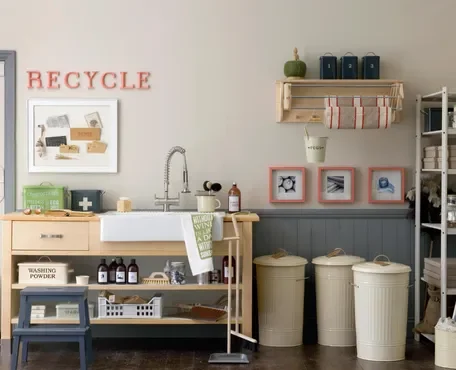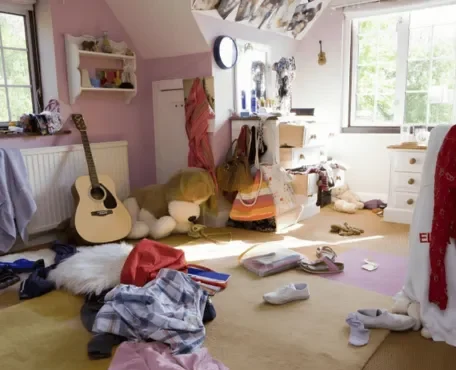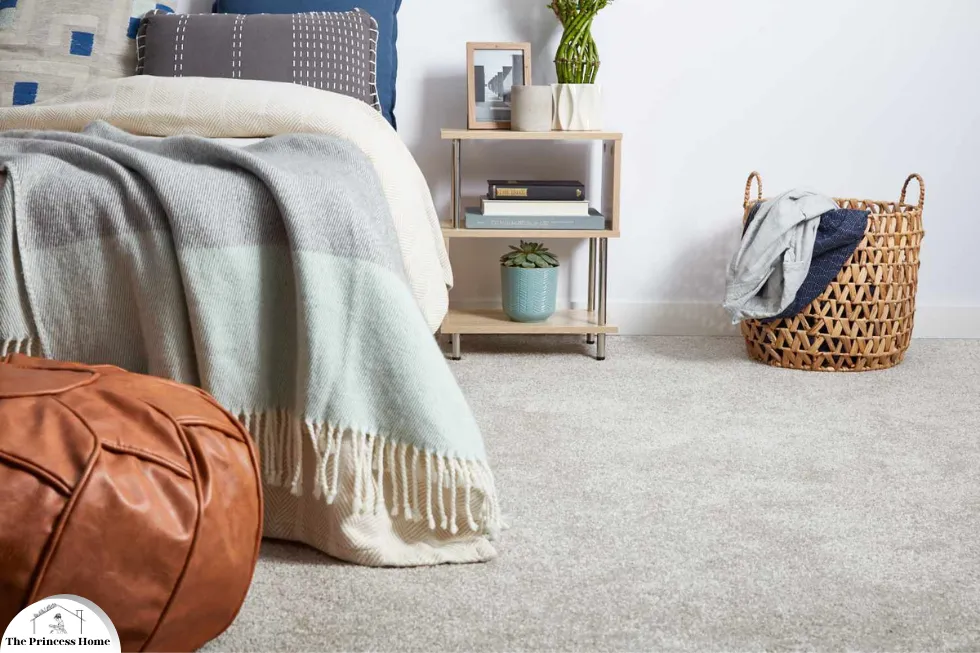
Carpets are a popular flooring choice in many homes and businesses, providing warmth, comfort, and style. However, over time, carpets can absorb odors from various sources such as spills, pet accidents, moisture, and everyday foot traffic. These odors not only affect the ambiance of your space but also create an unhealthy living environment if left untreated. Fortunately, there are effective methods to eliminate odors from carpets and restore freshness to your home or office.
In this comprehensive guide, we’ll outline 15 proven steps to help you banish odors from your carpets once and for all.
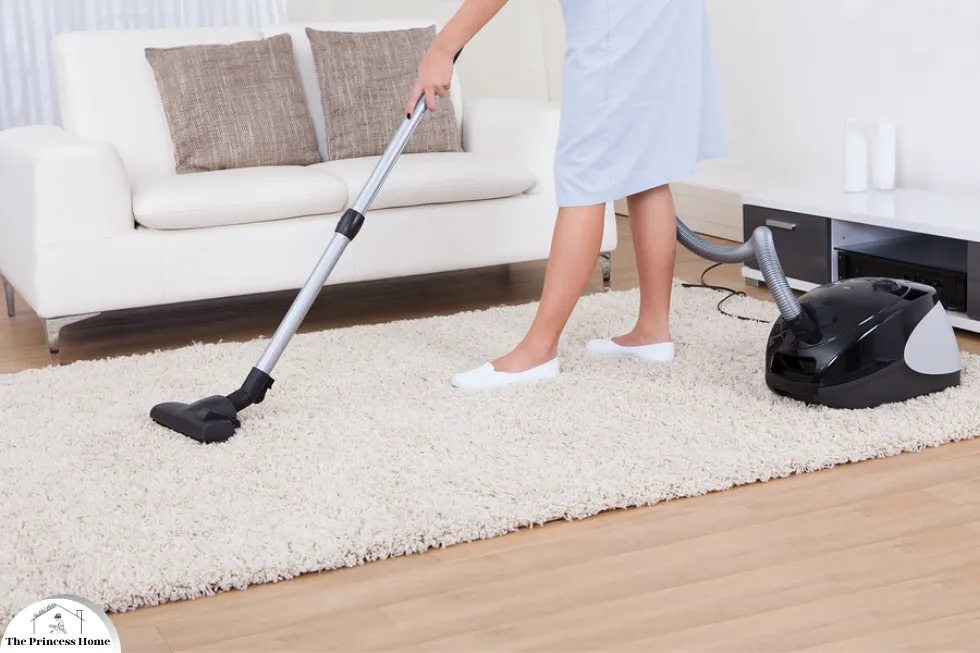
1.Vacuum Thoroughly:
Regular vacuuming is the first step in odor control for carpets. Use a high-quality vacuum cleaner with strong suction and a HEPA filter to effectively remove dirt, dust, and debris from the carpet fibers. Pay special attention to high-traffic areas and vacuum in different directions to loosen embedded particles. Vacuuming is the cornerstone of any carpet maintenance routine, and doing it thoroughly is essential for keeping your carpets clean and odor-free.
Here’s a detailed breakdown of why thorough vacuuming is crucial and how to do it effectively:
Importance of Thorough Vacuuming:
1.Removes Dirt and Debris:
Carpets act as a magnet for dirt, dust, pet dander, and other debris that can accumulate over time. Regular vacuuming helps lift and remove these particles from the carpet fibers, preventing them from settling deeper and causing odors.
2.Prevents Allergens:
Allergens such as pollen, mold spores, and dust mites can trigger allergies and respiratory issues if not removed from carpets. Thorough vacuuming with a HEPA filter captures these microscopic allergens, improving indoor air quality and reducing allergy symptoms.
3.Extends Carpet Lifespan:
Ground-in dirt and debris can wear down carpet fibers over time, leading to premature wear and tear. By regularly vacuuming high-traffic areas and removing abrasive particles, you can extend the lifespan of your carpets and maintain their appearance.
4.Eliminates Odor-Causing Substances:
Many odors stem from organic matter trapped in carpets, such as food crumbs, pet hair, and skin cells. Thorough vacuuming helps dislodge and remove these odor-causing substances, preventing them from breaking down and emitting unpleasant smells.
Tips for Effective Vacuuming:
1.Choose the Right Vacuum Cleaner:
Invest in a high-quality vacuum cleaner with strong suction power and a HEPA filter. A vacuum with adjustable height settings and brush attachments is ideal for cleaning different carpet types and reaching tight spaces.
2.Vacuum Regularly:
Aim to vacuum high-traffic areas of your carpets at least once or twice a week, and less frequently used areas at least once a week. Adjust the frequency based on your household’s needs and lifestyle factors such as pet ownership and indoor activities.
3.Use Proper Technique:
When vacuuming, use slow, overlapping strokes in different directions to ensure thorough coverage. Pay special attention to areas where dirt and debris tend to accumulate, such as entryways, hallways, and around furniture.
4.Empty the Vacuum Bag or Canister:
Regularly emptying the vacuum bag or canister prevents it from becoming clogged and ensures optimal suction power. Replace or clean the vacuum filter as recommended by the manufacturer to maintain peak performance.
5.Treat Spills and Stains Promptly:
Spot clean spills and stains as soon as they occur to prevent them from setting into the carpet fibers. Blot the affected area with a clean cloth or paper towel, then use a carpet cleaner or spot treatment according to the manufacturer’s instructions.
6.Vacuum Under Furniture:
Don’t forget to vacuum under furniture and along baseboards where dust and debris can accumulate unnoticed. Use a crevice tool or upholstery attachment to reach tight spaces and corners.
7.Consider High-Traffic Mats:
Place mats or rugs at entryways and high-traffic areas to trap dirt and moisture before it reaches the carpet. Clean or shake out the mats regularly to prevent them from becoming sources of odor and contamination.
By following these tips and making thorough vacuuming a regular part of your carpet maintenance routine, you can effectively control odors and keep your carpets looking and smelling fresh for years to come.
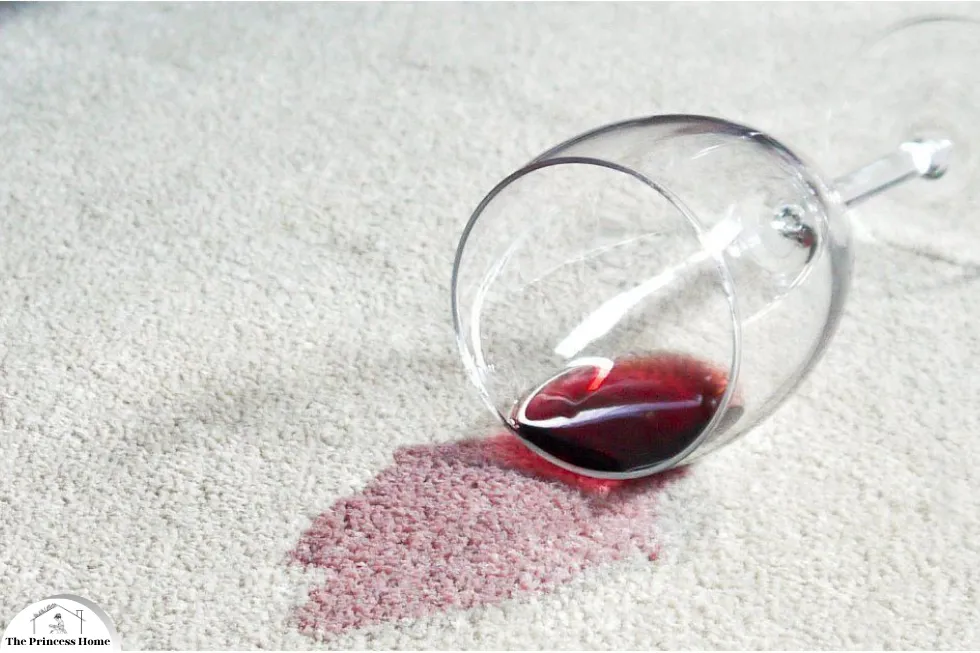
2.Spot Clean Spills Immediately:
Promptly address spills and stains to prevent them from setting into the carpet fibers and causing odors. Blot liquid spills with a clean, absorbent cloth or paper towel, being careful not to rub or spread the stain. For solid spills, gently scrape off the excess before treating the area with a carpet cleaner. Spot cleaning spills immediately is crucial for preventing stains and odors from setting into your carpet fibers.
Here’s a detailed guide on how to effectively address spills and stains:
Why Prompt Spill Cleanup Matters:
1.Prevents Stains:
Spills can quickly penetrate carpet fibers and leave behind unsightly stains if not addressed promptly. Acting swiftly helps minimize the risk of permanent discoloration and keeps your carpets looking clean and fresh.
2.Eliminates Odors:
Spills, especially those containing food or beverages, can contribute to unpleasant odors as they decompose. By cleaning up spills promptly, you can prevent organic matter from breaking down and emitting foul smells.
3.Preserves Carpet Integrity:
Certain spills, such as acidic liquids or pet urine, can damage carpet fibers and backing if left untreated. Prompt cleanup helps mitigate potential damage and prolongs the lifespan of your carpets.
Steps for Effective Spill Cleanup:
1.Act Quickly:
As soon as a spill occurs, act swiftly to prevent it from spreading and soaking deeper into the carpet fibers. The longer a spill sits, the harder it becomes to remove.
2.Blot, Don’t Rub:
Use a clean, absorbent cloth or paper towel to blot the spill, starting from the outer edges and working your way toward the center. Avoid rubbing the spill, as this can push the liquid deeper into the carpet and worsen the stain.
3.Absorb Excess Liquid:
For liquid spills, continue blotting until you’ve absorbed as much moisture as possible. Press firmly with the cloth to encourage absorption without spreading the spill further.
4.Remove Solid Debris:
For solid spills such as food crumbs or pet waste, gently scoop or scrape off the excess using a spoon, spatula, or dull knife. Be careful not to press the debris into the carpet fibers, as this can make it harder to remove.
5.Treat with Carpet Cleaner:
Once you’ve absorbed the excess moisture or debris, treat the affected area with a carpet cleaner or spot treatment solution. Choose a product specifically formulated for your carpet type and the type of stain you’re dealing with.
6.Follow Product Instructions:
Read and follow the manufacturer’s instructions for the carpet cleaner or spot treatment solution carefully. Apply the product to the stained area according to the recommended guidelines, taking care not to oversaturate the carpet.
7.Blot and Rinse:
After applying the cleaner, blot the area again with a clean, damp cloth to lift away any remaining residue. Rinse the cloth frequently and continue blotting until no more color transfers onto the cloth.
8.Allow to Dry:
Allow the treated area to air dry completely before walking on it or placing furniture back in position. Avoid using excessive heat or fans, as this can set the stain or spread moisture deeper into the carpet.
By following these steps and addressing spills promptly, you can prevent stains, odors, and damage to your carpets, keeping them looking and smelling fresh for years to come.
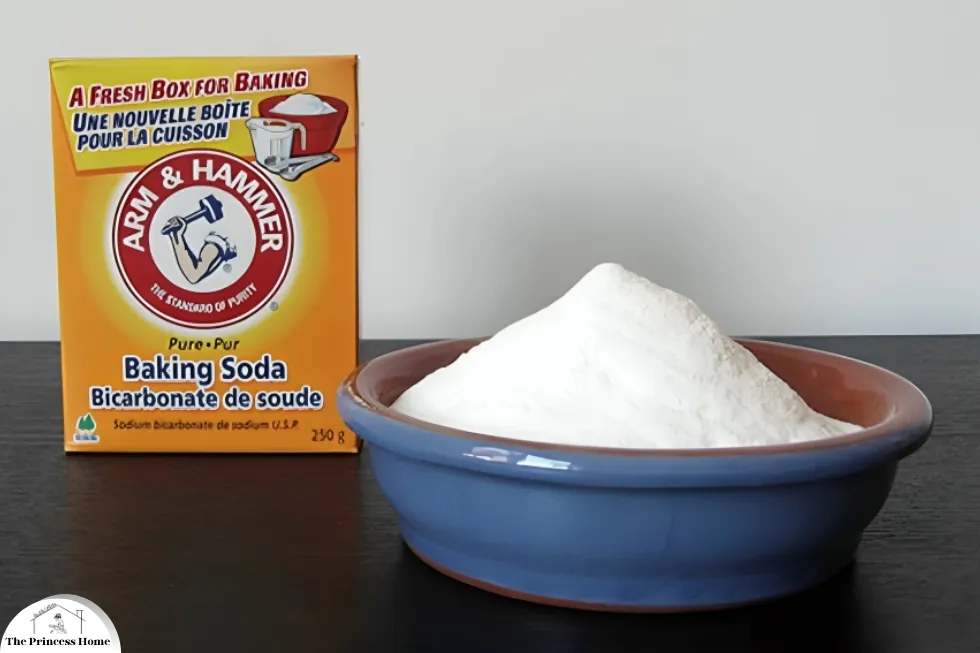
3.Use Baking Soda:
Baking soda is a natural deodorizer that can help neutralize odors trapped in carpets. Sprinkle a generous amount of baking soda evenly over the carpet surface and let it sit for several hours or overnight. Vacuum thoroughly to remove the baking soda along with the absorbed odors. Baking soda is a versatile household ingredient that can work wonders as a natural deodorizer for carpets.
Here’s a detailed guide on how to effectively use baking soda to neutralize odors trapped in your carpet fibers:
Why Baking Soda Works:
1.Neutralizes Odors:
Baking soda, also known as sodium bicarbonate, is alkaline in nature and has the ability to neutralize acidic odors. It chemically reacts with odor-causing compounds, such as those from pet accidents or food spills, to help eliminate foul smells.
2.Absorbs Moisture:
Baking soda has excellent absorbent properties, allowing it to draw moisture and odor-causing particles out of carpet fibers. As it sits on the carpet surface, baking soda acts like a sponge, absorbing and trapping odors until they can be vacuumed away.
3.Safe &Environmentally Friendly:
Baking soda is non-toxic, biodegradable, and safe to use around pets and children. Unlike some commercial carpet deodorizers that contain harsh chemicals, baking soda offers a natural and eco-friendly solution for freshening carpets.
Steps for Using Baking Soda:
1.Prepare the Carpet Surface:
Before applying baking soda, ensure the carpet is clean and free of debris. Vacuum the carpet thoroughly to remove loose dirt, dust, and pet hair, focusing on high-traffic areas and spots with visible stains.
2.Sprinkle Baking Soda:
Generously sprinkle baking soda evenly over the entire carpet surface, paying particular attention to areas where odors are most concentrated. Use a spoon or shaker to distribute the baking soda evenly for thorough coverage.
3.Allow to Sit:
After applying the baking soda, allow it to sit on the carpet surface for several hours or overnight. The longer it sits, the more time it has to absorb odors and moisture from the carpet fibers.
4.Vacuum Thoroughly:
Once the baking soda has had sufficient time to work its magic, vacuum the carpet thoroughly to remove the baking soda along with the absorbed odors. Use a vacuum cleaner with strong suction and a clean filter for best results.
5.Repeat if Necessary:
For stubborn or lingering odors, you may need to repeat the baking soda treatment or target specific areas with heavier odors. Be patient and thorough in your application to ensure maximum odor removal.
6.Air Out the Room:
After vacuuming, open windows and doors to allow fresh air to circulate throughout the room. This helps further dissipate any remaining odors and leaves your carpets smelling clean and fresh.
7.Enjoy Fresh, Odor-Free Carpets:
Once the baking soda treatment is complete and the carpets are dry, enjoy the fresh, clean scent of your revitalized carpets. Regularly using baking soda as a deodorizing treatment can help maintain a pleasant ambiance in your home or office.
By following these steps and incorporating baking soda into your carpet maintenance routine, you can effectively neutralize odors and keep your carpets looking and smelling fresh for longer periods.

4.Try White Vinegar Solution:
White vinegar is an effective and eco-friendly solution for eliminating carpet odors. Mix equal parts of white vinegar and water in a spray bottle and lightly mist the affected areas of the carpet. Allow the solution to penetrate the fibers for a few minutes before blotting dry with a clean cloth. White vinegar is a household staple known for its versatility in cleaning and deodorizing various surfaces, including carpets.
Here’s a detailed guide on how to effectively use a white vinegar solution to eliminate odors from your carpet:
Why White Vinegar Works:
1.Neutralizes Odors:
White vinegar is acidic in nature, which makes it effective at neutralizing alkaline odors present in carpets. It chemically reacts with odor-causing compounds, such as those from pet accidents or food spills, to help eliminate unpleasant smells.
2.Disinfects and Sanitizes:
White vinegar possesses antimicrobial properties that can help kill odor-causing bacteria and fungi lurking within carpet fibers. Using vinegar as a carpet deodorizer not only neutralizes odors but also helps sanitize the carpet surface, creating a healthier environment.
3.Environmentally Friendly:
Unlike some commercial carpet deodorizers that contain harsh chemicals and artificial fragrances, white vinegar is natural, non-toxic, and environmentally friendly. It’s safe to use around pets and children, making it an ideal choice for eco-conscious households.
Steps for Using White Vinegar Solution:
1.Prepare the Solution:
Mix equal parts of white vinegar and water in a spray bottle to create a diluted vinegar solution. For example, you can combine one cup of white vinegar with one cup of water for a 1:1 ratio. Shake the bottle well to ensure thorough mixing.
2.Test in a Hidden Area:
Before applying the vinegar solution to the entire carpet, test it in a small, inconspicuous area to check for any adverse reactions, such as discoloration or damage. Wait a few minutes and inspect the test spot for any signs of damage before proceeding.
3.Lightly Mist the Carpet:
Once you’ve tested the solution and confirmed its compatibility with your carpet, lightly mist the affected areas of the carpet with the diluted vinegar solution. Avoid saturating the carpet, as excessive moisture can lead to prolonged drying times and potential damage to the carpet padding.
4.Allow to Penetrate:
Allow the vinegar solution to penetrate the carpet fibers for a few minutes to effectively neutralize odors and sanitize the surface. During this time, the acidic properties of the vinegar will work to break down odor-causing compounds and kill bacteria.
5.Blot Dry with a Clean Cloth:
After allowing the solution to sit, blot the treated areas dry with a clean, absorbent cloth or paper towel. Press firmly to absorb excess moisture and lift away any remaining residue, including odor-causing particles.
6.Air Dry Thoroughly:
To ensure the carpet dries completely and prevent the risk of mildew or mold growth, allow the treated areas to air dry thoroughly. Open windows and doors to promote air circulation and expedite the drying process.
7.Repeat if Necessary:
For stubborn or lingering odors, you may need to repeat the vinegar treatment or target specific areas with heavier odors. Be patient and thorough in your application to achieve optimal results.
8.Enjoy Fresh, Odor-Free Carpets:
Once the vinegar treatment is complete and the carpets are dry, enjoy the fresh, clean scent of your revitalized carpets. Regularly using white vinegar as a carpet deodorizer can help maintain a pleasant ambiance in your home or office.
By following these steps and incorporating a white vinegar solution into your carpet maintenance routine, you can effectively neutralize odors and keep your carpets looking and smelling fresh for longer periods.

5.Invest in a Carpet Cleaner:
Consider investing in a carpet cleaner or renting one for deep cleaning your carpets. Choose a cleaner suitable for your carpet type and follow the manufacturer’s instructions for mixing the cleaning solution and operating the machine. Steam cleaning can effectively remove deep-seated dirt and odors. Investing in a carpet cleaner or renting one for deep cleaning your carpets can be a game-changer when it comes to eliminating stubborn odors and restoring freshness to your home.
Here’s a detailed guide on how to effectively use a carpet cleaner to deep clean your carpets
1.Why Invest in a Carpet Cleaner:
1.Deep Cleans Carpet Fibers:
Carpet cleaners use powerful suction and rotating brushes to agitate and lift dirt, stains, and odors embedded deep within the carpet fibers. This deep cleaning action helps remove accumulated grime that regular vacuuming alone may not address.
2.Removes Stubborn Stains:
Carpet cleaners are equipped with specialized cleaning solutions and attachments designed to target and remove tough stains, including those caused by spills, pet accidents, and ground-in dirt. By effectively lifting and extracting stains, carpet cleaners can restore the appearance of your carpets.
3.Eliminates Odors:
Steam cleaning, a common method used by carpet cleaners, involves injecting hot water and cleaning solution into the carpet fibers and then extracting it along with dirt, debris, and odors. The high temperature of the steam helps kill odor-causing bacteria and fungi, leaving your carpets smelling fresh and clean.
Steps for Using a Carpet Cleaner:
1.Choose the Right Carpet Cleaner:
When selecting a carpet cleaner, consider factors such as carpet type, size of the area to be cleaned, and your budget. Choose a cleaner with features such as adjustable settings, multiple attachments, and a powerful motor for optimal cleaning performance.
2.Prepare the Cleaning Solution:
Follow the manufacturer’s instructions for mixing the cleaning solution with water in the designated reservoir of the carpet cleaner. Use a solution specifically formulated for your carpet type and the type of stains and odors you’re dealing with.
3.Pre-Treat Stubborn Stains:
Before using the carpet cleaner, pre-treat any stubborn stains or heavily soiled areas with a carpet stain remover or pre-treatment solution. Apply the product according to the manufacturer’s instructions and allow it to penetrate the fibers for several minutes before cleaning.
4.Fill the Water Tank:
Fill the clean water tank of the carpet cleaner with the prepared cleaning solution, ensuring it’s filled to the recommended level. Empty and rinse the dirty water tank if it’s not already clean from previous use.
5.Operate the Carpet Cleaner:
Turn on the carpet cleaner and adjust the settings as needed based on your carpet type and the level of soiling. Begin cleaning in one corner of the room and work your way methodically across the entire carpet, overlapping each pass for thorough coverage.
6.Use Proper Technique:
Slowly push the carpet cleaner forward to dispense the cleaning solution and agitate the carpet fibers, then pull it back toward you to suction up the dirty water and debris. Repeat this process in parallel rows until the entire carpet has been cleaned.
7.Pay Attention to High-Traffic Areas:
Focus extra attention on high-traffic areas, such as entryways and hallways, as these areas tend to accumulate more dirt and odors. Use the appropriate attachments or tools to target specific stains and deep-clean problem areas.
8.Allow to Dry:
After cleaning, allow the carpet to air dry completely before walking on it or replacing furniture. Open windows and doors, and use fans to promote air circulation and speed up the drying process.
9.Clean &Maintain the Carpet Cleaner:
Once you’ve finished cleaning, empty and rinse the dirty water tank, and clean any brushes or attachments according to the manufacturer’s instructions. Proper maintenance of the carpet cleaner ensures optimal performance and longevity.
By following these steps and using a carpet cleaner to deep clean your carpets, you can effectively remove dirt, stains, and odors, restoring freshness and vitality to your living space. Regular deep cleaning with a carpet cleaner can also extend the lifespan of your carpets and maintain their appearance for years to come.
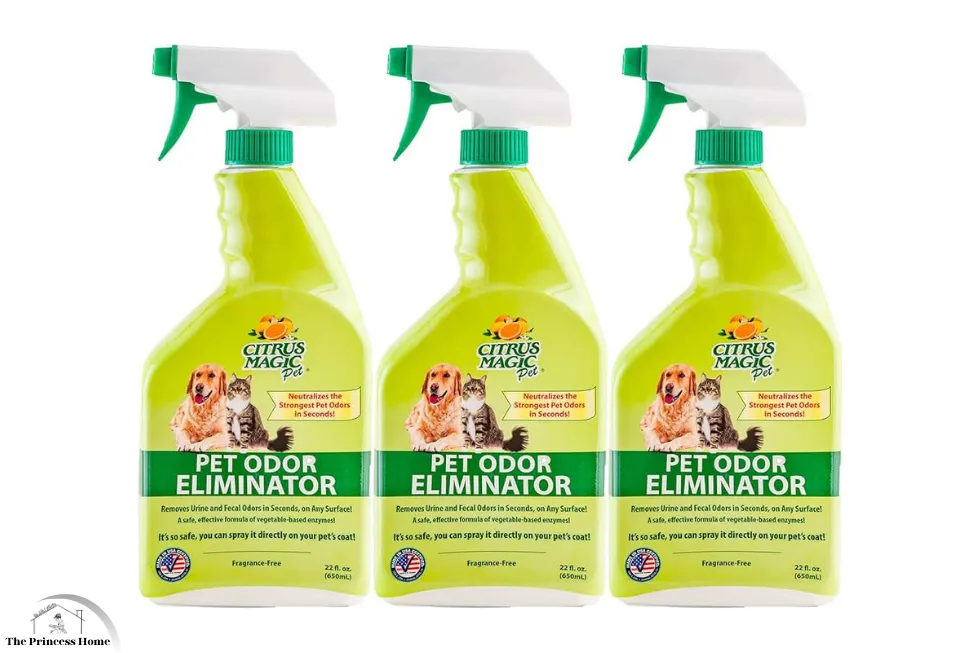
6.Cleaners for Pet Odors:
Pet accidents can leave stubborn odors in carpets due to the presence of urine and feces. Enzymatic cleaners are specially formulated to break down organic matter and eliminate odors at the source. Apply the cleaner to the affected areas and let it sit for the recommended time before blotting dry.
Pet accidents are a common cause of stubborn odors in carpets, but with the right approach, you can effectively eliminate these odors and restore freshness to your home. Enzymatic cleaners are a powerful solution specifically designed to tackle pet stains and odors at their source.
Here’s a detailed guide on how to use enzymatic cleaners for pet odors:
Why Use Enzymatic Cleaners:
1.Targets Organic Matter:
Enzymatic cleaners contain specific enzymes that break down organic matter, such as urine, feces, and vomit, into smaller, odorless compounds. By targeting the source of the odor, enzymatic cleaners effectively eliminate pet stains and odors, rather than simply masking them.
2.Neutralizes Odors:
Enzymes work by catalyzing biochemical reactions that break down odor-causing compounds at a molecular level. This natural process effectively neutralizes odors, leaving behind a clean and fresh-smelling carpet.
3.Prevents Re-Marking:
Unlike some traditional cleaners that may leave behind residual odors detectable to pets, enzymatic cleaners completely eliminate odors, reducing the likelihood of re-marking behavior in pets.
Steps for Using Enzymatic Cleaners:
1.Blot Up Excess Moisture:
If the pet accident is fresh, start by blotting up as much of the urine or feces as possible using a clean, absorbent cloth or paper towel. Press firmly to soak up the moisture without spreading the stain further.
2.Apply Enzymatic Cleaner:
Liberally apply the enzymatic cleaner to the affected area, ensuring complete coverage of the stain and surrounding area. Follow the manufacturer’s instructions for dilution ratios and application methods, as these may vary depending on the product.
3.Allow to Sit:
Once applied, allow the enzymatic cleaner to sit on the carpet surface for the recommended duration, typically 10 to 15 minutes or longer. This allows the enzymes to penetrate the carpet fibers and break down the organic matter causing the odor.
4.Blot Dry:
After the specified time has elapsed, blot the treated area with a clean, dry cloth or paper towel to absorb excess moisture and residual cleaner. Press firmly and repeat as needed until the area is relatively dry to the touch.
5.Allow to Air Dry:
Allow the treated area to air dry completely before allowing pets or foot traffic on the carpet. Avoid using heat sources such as hairdryers or fans, as heat can accelerate the growth of bacteria and prolong drying times.
6.Repeat if Necessary:
For particularly stubborn or old stains, you may need to repeat the enzymatic cleaning process multiple times to fully eliminate the odor. Be patient and persistent, as thorough treatment is key to success.
7.Check for Residual Odor:
After the carpet has dried completely, assess the treated area for any lingering odor. If the odor persists, consider reapplying the enzymatic cleaner or trying a different product specifically formulated for tough pet odors.
By following these steps and using enzymatic cleaners as directed, you can effectively eliminate pet stains and odors from your carpets, restoring a clean and fresh-smelling environment in your home. Remember to address accidents promptly and thoroughly to prevent odors from becoming entrenched in the carpet fibers.

7.Employ Odor Absorbers:
Odor-absorbing products like activated charcoal or commercial carpet deodorizers can help neutralize lingering smells. Sprinkle the odor absorber over the carpet surface and let it sit for the specified duration before vacuuming it up. These products trap odors and leave behind a fresh scent. Employing odor absorbers is an effective method for neutralizing lingering smells in carpets, leaving your space smelling clean and fresh.
Here’s how to effectively use odor absorbers such as activated charcoal :
1.Neutralizes Odors:
Odor absorbers work by trapping and neutralizing odorous molecules in the air and carpet fibers. They target a wide range of odors, including those from pets, food spills, smoke, and musty odors.
2.Safe and Non-Toxic:
Many odor absorbers, such as activated charcoal, are natural and non-toxic, making them safe to use around pets and children. They provide a chemical-free solution for eliminating odors without introducing harmful chemicals into your living environment.
3.Easy to Use:
Odor absorbers are simple to use and require minimal effort to apply. Whether using activated charcoal or commercial carpet deodorizers, the application process is quick and straightforward, making it a convenient option for odor removal.
Steps for Using Odor Absorbers:
1.Choose the Right Product:
Select an odor absorber product suitable for use on carpets. Popular options include activated charcoal, baking soda-based deodorizers, and commercial carpet powders. Choose a product that is specifically formulated to neutralize odors and safe for use on carpets.
2.Prepare the Area:
Before applying the odor absorber, ensure the carpet is clean and free of debris. Vacuum the carpet thoroughly to remove any loose dirt, dust, and pet hair, focusing on high-traffic areas and spots with lingering odors.
3.Apply the Odor Absorber:
Sprinkle the odor absorber evenly over the carpet surface, focusing on areas with persistent odors or high-traffic areas. Use a spoon or shaker to distribute the product evenly for thorough coverage.
4.Let it Sit:
Allow the odor absorber to sit on the carpet surface for the specified duration, typically ranging from 15 minutes to several hours, depending on the product instructions. During this time, the absorber will work to trap and neutralize odors.
5.Vacuum Thoroughly:
After the designated time has elapsed, vacuum the carpet thoroughly to remove the odor absorber along with the absorbed odors. Use a vacuum cleaner with strong suction and a clean filter for optimal results.
6.Repeat if Necessary:
For persistent or stubborn odors, you may need to repeat the application of the odor absorber or target specific areas with heavier odors. Be sure to follow the product instructions and avoid overapplication to prevent residue buildup.
7.Enjoy Fresh, Odor-Free Carpets:
Once the odor absorber has been vacuumed up, enjoy the fresh, clean scent of your revitalized carpets. Odor absorbers provide a quick and effective solution for neutralizing odors, leaving your space smelling clean and inviting.
By following these steps and incorporating odor absorbers into your carpet maintenance routine, you can effectively neutralize lingering odors and maintain a fresh-smelling environment in your home. Whether using activated charcoal or commercial deodorizers, odor absorbers offer a convenient and chemical-free solution for odor removal.

8.Utilize Sunlight &Fresh Air:
Natural sunlight and fresh air can help dissipate odors and refresh carpets. On a sunny day, open windows and doors to allow air circulation throughout the room. If possible, move furniture to expose the carpeted areas to direct sunlight, which helps kill bacteria and mold spores. Utilizing sunlight and fresh air is a simple yet effective way to naturally refresh and deodorize carpets, creating a clean and inviting living environment.
Here’s how to effectively harness the power of sunlight and fresh air to eliminate odors from your carpets:
Utilize Sunlight &Fresh Air:
1.Natural Deodorizing Action:
Sunlight has natural disinfectant properties and can help break down odor-causing compounds trapped in carpet fibers. Fresh air circulation aids in removing stale indoor air and replacing it with clean, oxygen-rich air, reducing musty odors.
2.Kills Bacteria and Mold:
Sunlight exposure helps kill bacteria, mold spores, and other microorganisms that may be present in carpets, contributing to odors and potential health hazards. Direct sunlight can penetrate deep into carpet fibers, targeting hidden sources of odor and contamination.
3.Environmentally Friendly:
Harnessing sunlight and fresh air for odor removal is eco-friendly and cost-effective, requiring no additional chemicals or energy consumption. It’s a sustainable approach to carpet maintenance that promotes a healthier indoor environment.
Steps for Utilizing Sunlight and Fresh Air:
1.Choose a Sunny Day:
Wait for a sunny day with clear skies to maximize the effectiveness of sunlight for odor removal. Sunlight is most potent when the UV index is high, typically during the midday hours.
2.Open Windows and Doors:
Open windows and doors throughout your home to allow fresh air to circulate freely. Create cross-ventilation by opening windows on opposite sides of the room to facilitate airflow and remove stale indoor air.
3.Move Furniture:
If feasible, move furniture and other obstacles to expose the carpeted areas to direct sunlight. Sunlight exposure is most effective when carpets are fully exposed to the sun’s rays, allowing for thorough disinfection and deodorization.
4.Allow Carpets to Air Out:
Leave carpets exposed to sunlight and fresh air for several hours to allow for maximum odor removal and disinfection. The combination of sunlight and airflow helps accelerate the evaporation of moisture and neutralizes odors trapped in carpet fibers.
5.Rotate Carpets:
If you have area rugs or movable carpets, consider rotating them periodically to ensure even exposure to sunlight and fresh air. This helps prevent uneven fading and promotes uniform deodorization across the carpet surface.
6.Monitor Weather Conditions:
Keep an eye on weather forecasts to plan future sunlight and fresh air treatments for your carpets. Take advantage of sunny days whenever possible to maintain a clean and fresh-smelling living environment.
7.Consider Outdoor Drying:
For smaller rugs or carpets, consider taking them outdoors to air out in direct sunlight. Hang rugs over a clothesline or lay them flat on a clean surface, ensuring they receive ample sunlight exposure on both sides.
8.Regular Maintenance:
Incorporate sunlight and fresh air treatments into your regular carpet maintenance routine to prevent odors from accumulating and maintain a healthy indoor environment. Consistent exposure to sunlight and fresh air helps prevent the buildup of mold, bacteria, and odors in carpets over time.
By following these steps and harnessing the power of sunlight and fresh air, you can effectively eliminate odors from your carpets and create a clean, fresh-smelling living environment. Sunlight and fresh air treatments offer a natural and environmentally friendly solution for maintaining clean and odor-free carpets year-round.

9.Incorporate Essential Oils:
Essential oils not only add a pleasant fragrance to carpets but also possess antimicrobial properties that can help eliminate odors. Mix a few drops of your favorite essential oil with water in a spray bottle and mist the carpet lightly. Be mindful of sensitive individuals and pets when using essential oils. Incorporating essential oils into your carpet care routine can add a delightful fragrance while also providing antimicrobial benefits to eliminate odors.
Here’s how to effectively use essential oils to freshen your carpets:
Why Use Essential Oils:
Pleasant Fragrance:
Essential oils come in a variety of scents, from refreshing citrus to soothing lavender, allowing you to customize the aroma of your carpets to suit your preferences. They add a natural and inviting fragrance that can uplift the atmosphere of any room.
Antimicrobial Properties:
Many essential oils possess antimicrobial properties that can help inhibit the growth of odor-causing bacteria and fungi in carpets. These natural compounds can contribute to a cleaner and healthier indoor environment, reducing the risk of musty odors.
Non-Toxic and Eco-Friendly:
Essential oils are derived from plant extracts and are non-toxic and environmentally friendly when used in moderation. They provide a safer alternative to synthetic air fresheners and deodorizers, which may contain harmful chemicals.
Steps for Incorporating Essential Oils:
Choose Your Essential Oil:
Select your favorite essential oil or a combination of oils with complementary scents. Popular options for carpet deodorizing include lavender, tea tree, eucalyptus, peppermint, lemon, and orange. Ensure the essential oil you choose is safe for use around pets and sensitive individuals.
Dilute with Water:
Add a few drops of the chosen essential oil to a spray bottle filled with water. The number of drops will depend on personal preference and the desired strength of the fragrance. Start with a small amount and adjust as needed.
Shake Well:
Shake the spray bottle vigorously to ensure the essential oil is thoroughly dispersed in the water. This helps create a uniform mixture for even distribution of the fragrance.
Test in a Hidden Area:
Before applying the essential oil spray to the entire carpet, test it in a small, inconspicuous area to check for any adverse reactions, such as staining or discoloration. Wait a few minutes and inspect the test spot to ensure compatibility with your carpet.
Lightly Mist the Carpet:
Once the test spot is deemed safe, lightly mist the essential oil spray over the carpet surface, focusing on areas where odors are most noticeable. Use a sweeping motion to ensure even coverage without saturating the carpet.
Allow to Dry:
Allow the carpet to air dry naturally after applying the essential oil spray. Avoid walking on the damp carpet until it is completely dry to prevent transferring the oil to shoes or bare feet.
Enjoy the Fragrance:
Once the carpet is dry, enjoy the uplifting aroma of the essential oils as they infuse the air. The pleasant fragrance will linger in the carpet fibers, creating a welcoming and refreshing environment in your home.
Reapply as Needed:
Reapply the essential oil spray as needed to maintain the desired fragrance level in your carpets. Depending on factors such as airflow, humidity, and foot traffic, the scent may dissipate over time and require refreshing.
By following these steps and incorporating essential oils into your carpet care routine, you can enjoy a naturally fragrant and inviting living space while benefiting from the antimicrobial properties of these botanical extracts. Essential oils provide a safe, non-toxic, and eco-friendly way to freshen carpets and enhance the ambiance of your home.

10.Professional Cleaning Services:
For stubborn or pervasive odors that resist DIY treatments, consider hiring a professional carpet cleaning service. Professional cleaners have the expertise, equipment, and specialized products to tackle even the toughest odors effectively. Schedule regular professional cleanings to maintain the freshness of your carpets. When DIY methods aren’t quite cutting it, turning to professional carpet cleaning services can be a game-changer in your battle against stubborn odors.
Here’s why you should consider hiring professionals and how to make the most of their services:
Professional Cleaning Services:
Expertise and Experience:
Professional carpet cleaners are trained and experienced in dealing with a wide range of carpet odors, stains, and issues. They have the knowledge to identify the root cause of odors and select the most effective treatment methods.
Specialized Equipment:
Professional carpet cleaning companies use advanced equipment and techniques that are not available to the average consumer. This includes powerful steam cleaners, high-pressure extraction machines, and specialized cleaning solutions designed to penetrate deep into carpet fibers.
Effective Odor Removal:
Professional cleaners have access to industrial-strength cleaning products and deodorizers that are more potent than those available for home use. These products are formulated to break down and neutralize stubborn odors at the molecular level, leaving carpets smelling fresh and clean.
Comprehensive Cleaning:
In addition to odor removal, professional carpet cleaning services provide a thorough deep cleaning of your carpets, removing embedded dirt, allergens, and bacteria that contribute to odors and degrade indoor air quality.
Steps for Hiring Professional Cleaning Services:
Research and Vet Companies:
Start by researching local carpet cleaning companies and reading reviews from previous customers. Look for companies with a solid reputation for quality service, professionalism, and customer satisfaction.
Request Quotes and Estimates:
Contact several carpet cleaning companies to request quotes and estimates for their services. Be sure to inquire about the specific treatments they offer for odor removal and any additional charges for extra services.
Ask About Methods and Products:
Inquire about the cleaning methods and products used by each company, especially if you have specific concerns such as pet odors or allergies. Look for companies that use eco-friendly and pet-safe cleaning solutions.
Schedule a Consultation:
Arrange a consultation with the carpet cleaning company to assess the condition of your carpets and discuss your odor removal needs. A reputable company will conduct a thorough inspection and provide recommendations tailored to your situation.
Prepare the Space:
Before the scheduled cleaning appointment, prepare the space by removing any obstacles or fragile items from the areas to be cleaned. This allows the cleaning technicians to work efficiently and ensures optimal results.
Communicate Any Concerns:
Be sure to communicate any specific concerns or problem areas with the cleaning technicians during the consultation. This will help them tailor their treatment approach to address your needs and priorities.
Follow Aftercare Recommendations:
After the cleaning is complete, follow any aftercare recommendations provided by the cleaning technicians to maintain the freshness and cleanliness of your carpets. This may include tips for drying time, ventilation, and spot cleaning.
Schedule Regular Cleanings:
To prevent odors from returning and maintain the overall health and appearance of your carpets, consider scheduling regular professional cleanings on a semi-annual or annual basis. This proactive approach can help extend the lifespan of your carpets and improve indoor air quality.
By following these steps and enlisting the help of professional carpet cleaning services, you can effectively tackle stubborn odors and enjoy fresh, clean carpets year-round. With their expertise, specialized equipment, and effective treatment methods, professional cleaners can provide the deep cleaning and odor removal your carpets need to look and smell their best.
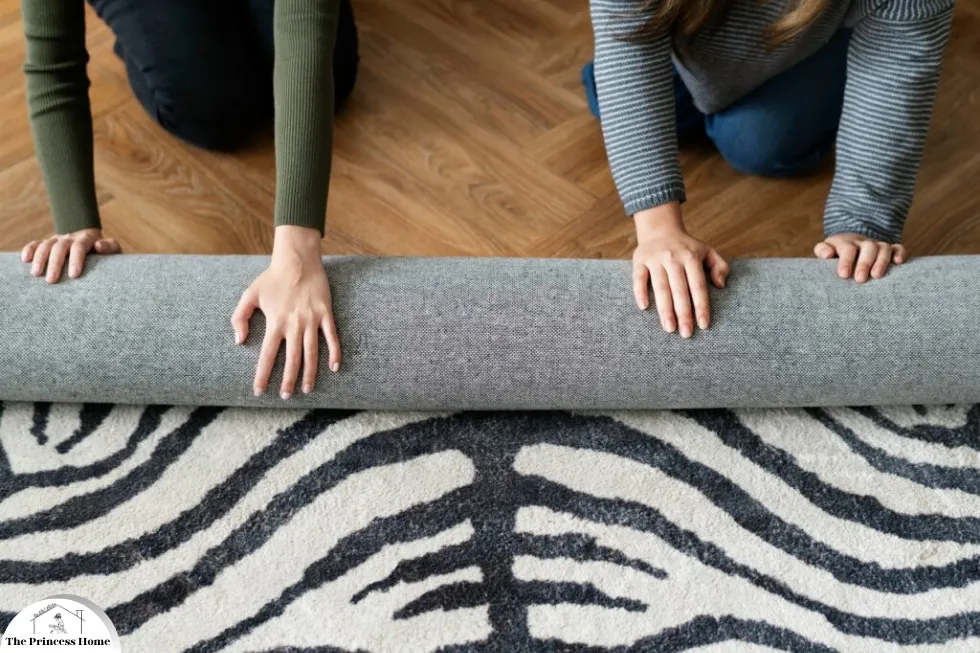
11.Address Underlying Issues:
Persistent odors may indicate underlying issues such as mold, mildew, or water damage. Inspect the carpet and subfloor for signs of moisture or damage and address any issues promptly to prevent further odor problems. Repair leaks, improve ventilation, and maintain proper humidity levels to deter mold growth. Addressing underlying issues is essential for effectively eliminating persistent odors in carpets and preventing them from returning.
Here’s how to identify and tackle potential root causes of odors such as mold, mildew, or water damage:
Identifying Underlying Issues:
Inspect the Carpet and Subfloor:
Begin by thoroughly inspecting the carpet and subfloor for signs of moisture, water damage, or mold growth. Look for discoloration, dampness, musty odors, or visible mold or mildew on the carpet fibers, padding, or subflooring.
Check for Leaks:
Investigate areas prone to leaks or water intrusion, such as near plumbing fixtures, windows, doors, and the roof. Check for signs of water stains, drips, or puddles that may indicate a leaky pipe, roof leak, or faulty seal.
Ventilation &Humidity Levels:
Poor ventilation and high humidity levels can contribute to mold and mildew growth, leading to persistent odors in carpets. Evaluate the ventilation system in your home, including exhaust fans in bathrooms and kitchens, and ensure adequate airflow to prevent moisture buildup.
Look for Condensation:
Condensation on windows, walls, or ceilings can indicate excessive moisture levels indoors. Address sources of condensation by improving ventilation, using dehumidifiers, and sealing air leaks to reduce humidity levels.
Consider Past Water Damage:
If your home has experienced water damage in the past, such as from flooding, roof leaks, or plumbing failures, it’s crucial to inspect the affected areas for residual moisture and mold growth. Even small amounts of moisture left untreated can lead to persistent odors and mold issues.
Test for Mold:
If you suspect mold growth but it’s not visible, consider hiring a professional mold remediation company to conduct mold testing. They can take samples and perform air quality tests to determine the presence of mold spores and assess the extent of the problem.
Addressing Underlying Issues:
Repair Leaks Promptly:
Address any leaks or sources of water intrusion promptly to prevent further damage and mold growth. Fix leaky pipes, repair roof leaks, and seal gaps or cracks where water may enter the home.
Improve Ventilation:
Increase airflow and ventilation in areas prone to moisture buildup, such as bathrooms, kitchens, and basements. Install exhaust fans, open windows when weather permits, and use air purifiers to improve indoor air quality.
Maintain Proper Humidity Levels:
Keep indoor humidity levels between 30% and 50% to prevent mold and mildew growth. Use dehumidifiers in damp areas, such as basements or crawl spaces, and monitor humidity levels regularly with a hygrometer.
Remove Mold and Mildew:
If mold or mildew is present, take steps to remove it thoroughly and safely. Wear protective gear, such as gloves and a mask, and use appropriate cleaning products, such as diluted bleach or commercial mold remover, to disinfect affected surfaces.
Replace Damaged Materials:
In severe cases of water damage or mold infestation, it may be necessary to remove and replace damaged materials, including carpet padding, subflooring, and drywall. This ensures that all traces of mold and moisture are eliminated, preventing future odor problems.
Professional Remediation:
For extensive mold or water damage, consider hiring a professional mold remediation company to handle the cleanup and restoration process. They have the expertise, equipment, and training to safely and effectively remove mold and restore your home to a clean and healthy condition.
By addressing underlying issues such as mold, mildew, or water damage promptly and thoroughly, you can effectively eliminate persistent odors in carpets and create a healthier indoor environment for you and your family. Regular maintenance and proactive measures to prevent moisture buildup are key to preventing future odor problems and preserving the integrity of your home.
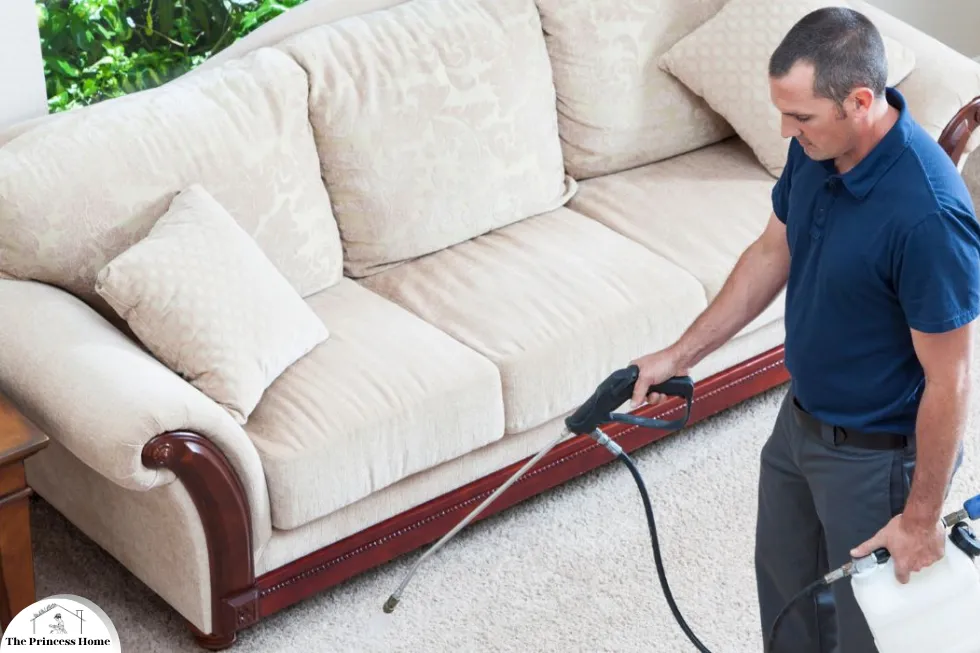
12.Apply Carpet Sealants:
After thorough cleaning and deodorizing, consider applying a carpet sealant or protector to prevent future odors and stains. Carpet sealants create a protective barrier that repels spills and prevents them from penetrating deep into the carpet fibers, making cleanup easier and prolonging the freshness of your carpets. Applying a carpet sealant or protector is a proactive step to safeguard your carpets against future odors and stains, extending their lifespan and maintaining their appearance.
Here’s how to effectively apply a carpet sealant to preserve the cleanliness and freshness of your carpets:
Why Apply Carpet Sealants:
Prevents Stains and Spills:
Carpet sealants create a protective barrier on the surface of the carpet fibers, preventing liquids, dirt, and stains from penetrating deep into the fabric. This barrier repels spills, making cleanup easier and reducing the likelihood of stains and odors setting in.
Prolongs Carpet Life:
By minimizing the absorption of moisture and contaminants, carpet sealants help prevent premature wear and tear, discoloration, and deterioration of carpet fibers. This prolongs the life of your carpets and maintains their appearance for years to come.
Facilitates Easy Cleaning:
Carpets treated with a sealant are easier to clean and maintain, as spills and stains remain on the surface rather than soaking into the fibers. Regular vacuuming and spot cleaning become more effective, helping to preserve the cleanliness and freshness of your carpets.
Steps for Applying Carpet Sealants:
Choose a Quality Sealant:
Select a high-quality carpet sealant or protector designed specifically for your carpet type and fiber composition. Look for products that offer long-lasting protection and are safe for use on carpets and rugs.
Test in a Hidden Area:
Before applying the sealant to the entire carpet, test it in a small, inconspicuous area to ensure compatibility and assess any potential color changes or adverse reactions. Wait for the test spot to dry completely before proceeding.
Clean the Carpet Thoroughly:
Before applying the sealant, ensure the carpet is clean and free of dirt, stains, and odors. Vacuum the carpet thoroughly to remove any loose debris and use appropriate cleaning methods to address any existing stains or spills.
Apply the Sealant:
Follow the manufacturer’s instructions for applying the carpet sealant. Most sealants come in spray or liquid form and can be applied using a sprayer, roller, or brush. Work in small sections, applying the sealant evenly and in a thin, uniform layer.
Allow to Dry:
After applying the sealant, allow the carpet to dry completely before resuming normal foot traffic or furniture placement. Depending on the product, drying times may vary, so refer to the manufacturer’s recommendations for optimal results.
Reapply as Needed:
Over time, the protective barrier created by the sealant may wear off due to foot traffic, cleaning, and general wear and tear. Monitor the condition of your carpets and reapply the sealant as needed to maintain ongoing protection against stains and odors.
Follow Manufacturer’s Recommendations:
Follow the manufacturer’s guidelines for proper care and maintenance of carpets treated with a sealant. This may include recommendations for cleaning methods, spot treatments, and reapplication intervals to ensure long-lasting protection and optimal performance.
By following these steps and applying a carpet sealant or protector, you can effectively safeguard your carpets against future odors and stains, prolonging their lifespan and preserving their appearance. Regular maintenance and proactive measures such as sealant application are key to maintaining clean, fresh, and odor-free carpets in your home.
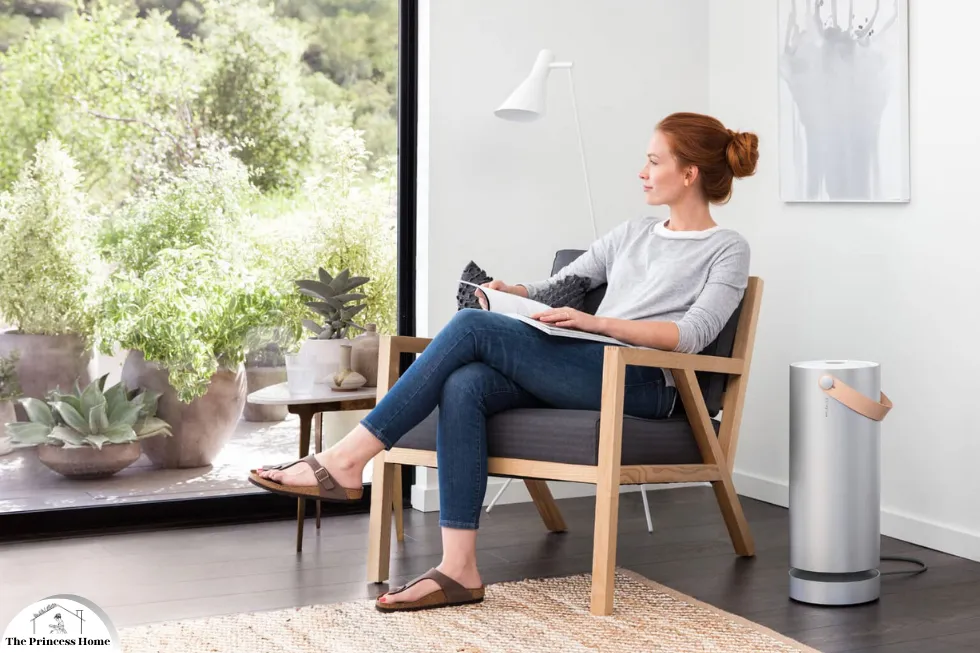
13.Good Indoor Air Quality:
Poor indoor air quality can exacerbate carpet odors and affect overall health. Use air purifiers equipped with HEPA filters to remove airborne pollutants and allergens from the indoor environment. Avoid smoking indoors and minimize the use of harsh chemical cleaners that can leave behind lingering odors.
Maintaining good indoor air quality is essential for creating a healthy and comfortable living environment, especially when dealing with carpet odors.
Here’s how to improve indoor air quality to mitigate carpet odors and promote overall well-being:
Use Air Purifiers with HEPA Filters:
Invest in air purifiers equipped with High-Efficiency Particulate Air (HEPA) filters to effectively capture and remove airborne pollutants, allergens, and odors from the indoor environment. HEPA filters can trap microscopic particles such as dust, pet dander, pollen, and mold spores, reducing the concentration of odor-causing contaminants in the air.
Ventilate Your Home:
Increase ventilation in your home by opening windows and doors to allow fresh outdoor air to circulate and stale indoor air to escape. Use exhaust fans in bathrooms, kitchens, and other areas prone to moisture and odors to remove humid air and prevent condensation buildup.
Avoid Smoking Indoors:
Smoking indoors can introduce harmful chemicals and odors into the air, contributing to indoor air pollution and exacerbating carpet odors. Establish a smoke-free policy indoors and encourage smoking outdoors in well-ventilated areas to minimize exposure to secondhand smoke and prevent odors from permeating carpets and furnishings.
Choose Low-VOC Products:
Minimize the use of harsh chemical cleaners, air fresheners, and household products that contain volatile organic compounds (VOCs), which can release harmful gases and contribute to indoor air pollution and odors. Opt for eco-friendly, low-VOC alternatives or make your own natural cleaning solutions using ingredients such as vinegar, baking soda, and essential oils.
Clean Regularly:
Maintain a regular cleaning routine to remove dust, dirt, and allergens from carpets, floors, and surfaces. Vacuum carpets and area rugs frequently using a vacuum cleaner equipped with a HEPA filter to capture fine particles and prevent them from becoming airborne. Clean hard surfaces with microfiber cloths and environmentally friendly cleaners to reduce dust and dirt buildup.
Address Moisture Issues:
Address sources of excess moisture in your home, such as leaks, condensation, and high humidity levels, which can contribute to mold growth and musty odors. Repair leaks promptly, improve ventilation in damp areas, and use dehumidifiers to maintain indoor humidity levels between 30% and 50%.
Regular Carpet Maintenance:
Implement regular carpet maintenance practices, such as vacuuming, spot cleaning, and professional deep cleaning, to remove dirt, stains, and odors from carpets and prevent them from becoming trapped in the fibers. Consider applying carpet sealants or protectors to create a barrier against spills and stains, prolonging the freshness of your carpets.
By prioritizing indoor air quality and implementing these strategies, you can effectively mitigate carpet odors, reduce indoor air pollution, and create a healthier and more comfortable indoor environment for you and your family. Consistent maintenance and proactive measures are key to maintaining good indoor air quality and preserving the cleanliness and freshness of your carpets.

14.Adopt Preventive Measures:
Prevention is key to keeping carpets odor-free in the long run. Implement preventive measures such as removing shoes before entering carpeted areas, placing mats at entryways to trap dirt and moisture, and grooming pets regularly to reduce shedding and accidents. By taking proactive steps, you can minimize the accumulation of dirt and odors on your carpets.
Adopting preventive measures is crucial for maintaining odor-free carpets and prolonging their cleanliness and freshness over time.
Here are some effective preventive measures to implement:
Remove Shoes Indoors:
Encourage household members and guests to remove their shoes before entering carpeted areas. Shoes can track in dirt, debris, and outdoor contaminants, leading to the accumulation of odors and stains on carpets. Provide a designated area near entryways for storing shoes or offer slippers for indoor use.
Place Mats at Entryways:
Position mats or rugs at entry points to trap dirt, moisture, and debris from shoes before they reach the carpeted areas. Choose absorbent mats with textured surfaces that can effectively scrape off dirt and absorb moisture. Regularly clean and shake out mats to prevent the buildup of dirt and odors.
Groom Pets Regularly:
If you have pets, establish a regular grooming routine to reduce shedding and minimize the spread of pet hair and dander on carpets. Brush your pets frequently to remove loose fur and debris, and bathe them as needed to keep their coats clean and odor-free. Additionally, promptly clean up any pet accidents to prevent odors from permeating the carpet fibers.
Vacuum Frequently:
Vacuuming is essential for removing dirt, dust, and allergens from carpets and preventing them from accumulating and causing odors. Establish a regular vacuuming schedule and vacuum carpets at least once or twice a week, focusing on high-traffic areas and spots where dirt tends to accumulate. Use a vacuum cleaner equipped with a HEPA filter for optimal dust and allergen removal.
Clean Spills Immediately:
Promptly address spills and stains to prevent them from setting into the carpet fibers and causing odors. Blot liquid spills with a clean, absorbent cloth or paper towel, and use a mild carpet cleaner or vinegar solution to treat the affected area. Avoid rubbing or scrubbing the stain, as this can spread it further and damage the carpet fibers.
Schedule Professional Cleanings:
Regular professional carpet cleanings are essential for deep cleaning and removing embedded dirt, odors, and allergens from carpets. Consider scheduling professional cleanings at least once or twice a year, or more frequently in households with pets or heavy foot traffic. Professional cleaners have the expertise and equipment to effectively clean and refresh your carpets, extending their lifespan and maintaining their appearance.
Use Carpet Protectors:
Apply carpet protectors or sealants after cleaning to create a barrier against spills, stains, and odors. Carpet protectors form a protective layer on the surface of the carpet fibers, making it easier to clean up spills and preventing them from penetrating deep into the carpet.
By adopting these preventive measures and incorporating them into your regular carpet maintenance routine, you can minimize the accumulation of dirt and odors on your carpets, prolonging their cleanliness and freshness in the long run. Consistent maintenance and proactive steps are key to preserving the beauty and integrity of your carpets for years to come.

15.Regular Maintenance:
Maintain a regular cleaning and maintenance routine to keep your carpets looking and smelling fresh. Vacuum high-traffic areas frequently, spot clean spills promptly, and schedule professional cleanings as needed. By staying proactive, you can extend the lifespan of your carpets and enjoy a clean, odor-free environment. Regular maintenance is essential for preserving the cleanliness and freshness of your carpets and ensuring a clean, odor-free environment in your home.
Here’s how to maintain a regular cleaning &maintenance routine for your carpets:
Vacuum High-Traffic Areas Frequently:
Focus on vacuuming high-traffic areas of your carpets frequently to remove dirt, dust, and debris that can accumulate quickly. Use a vacuum cleaner with strong suction and a rotating brush or beater bar to effectively lift and remove embedded dirt from carpet fibers.
Rotate Furniture:
Periodically move and rotate furniture to prevent permanent indentations and wear patterns on carpets. Shifting furniture allows for more even wear and distributes foot traffic across different areas of the carpet, helping to maintain its appearance and texture.
Spot Clean Spills Promptly:
Address spills and stains as soon as they occur to prevent them from setting into the carpet fibers and causing odors or permanent discoloration. Blot liquid spills with a clean, absorbent cloth or paper towel, and use a mild carpet cleaner or vinegar solution to treat the affected area. Avoid rubbing or scrubbing the stain, as this can spread it further and damage the carpet fibers.
Use Entrance Mats:
Place mats or rugs at entryways and high-traffic areas to trap dirt, moisture, and debris from shoes before they reach the carpeted areas. Regularly clean and shake out mats to prevent the buildup of dirt and odors, and replace them as needed to maintain their effectiveness.
Schedule Professional Cleanings:
Consider scheduling professional carpet cleanings on a regular basis to deep clean and refresh your carpets. Professional cleaners have the expertise, equipment, and specialized cleaning solutions to effectively remove embedded dirt, odors, and allergens from carpets, extending their lifespan and maintaining their appearance.
Test Cleaning Products:
Before using any carpet cleaning products or solutions, test them in a small, inconspicuous area to ensure compatibility and prevent damage to the carpet fibers or color fading. Follow the manufacturer’s instructions carefully and avoid using harsh chemicals or abrasive cleaners that can damage the carpet.
Use Carpet Protectors:
Apply carpet protectors or sealants after cleaning to create a barrier against spills, stains, and odors. Carpet protectors help repel liquids and prevent them from penetrating deep into the carpet fibers, making cleanup easier and prolonging the freshness of your carpets.
Address Pet Odors:
If you have pets, address pet odors promptly by cleaning up accidents and pet hair regularly. Use enzymatic cleaners designed specifically for pet odors to break down organic matter and eliminate odors at the source.
By maintaining a regular cleaning and maintenance routine for your carpets, you can extend their lifespan, preserve their appearance, and enjoy a clean, odor-free environment in your home. Consistent upkeep and proactive measures are key to keeping your carpets looking and smelling fresh for years to come.
Conclusion:
Eliminating odors from carpets requires a combination of cleaning techniques, preventive measures, and regular maintenance. By following the 15 steps outlined in this guide, you can effectively banish odors and restore freshness to your carpets, creating a clean and inviting living or working environment. Remember to address underlying issues, incorporate preventive measures, and maintain good indoor air quality to prevent odors from returning. With proper care and attention, you can enjoy clean, odor-free carpets for years to come.
Here are some frequently asked questions:
Q1: How often should I vacuum my carpets to prevent odors?
A: It’s recommended to vacuum high-traffic areas of your carpets at least once or twice a week to remove surface dirt and debris that can contribute to odors. For less frequently used areas, a weekly vacuuming session should suffice.
Q2: Can I use baking soda on all types of carpets?
A: Baking soda is generally safe for most types of carpets, including synthetic and natural fibers. However, it’s always a good idea to test a small, inconspicuous area first to ensure compatibility and avoid potential discoloration or damage.
Q3: Will vinegar leave a lingering smell on my carpets?
A: When used in moderation and properly diluted, vinegar should not leave a strong lingering smell on carpets. However, it’s essential to allow the vinegar solution to dry completely and ventilate the area to dissipate any residual odor.
Q4: Is steam cleaning safe for all carpet types?
A: Steam cleaning is generally safe for most carpets, but it’s essential to check the manufacturer’s recommendations and care instructions before proceeding. Certain delicate or sensitive carpet fibers may require special cleaning methods to avoid damage.
Q5: How can I remove pet odors from my carpets?
A: Enzyme-based cleaners are highly effective for neutralizing pet odors caused by urine, feces, or vomit. These cleaners contain specialized enzymes that break down organic matter and eliminate odor-causing bacteria.
Q6: Can essential oils stain or damage carpets?
A: When used properly and in moderation, essential oils should not stain or damage carpets. However, it’s essential to dilute the oils adequately and avoid excessive application to prevent potential issues. Always test a small area first and use caution with sensitive individuals and pets.
Q7: How long does it take for carpet odors to dissipate after treatment?
A: The time it takes for carpet odors to dissipate depends on various factors such as the severity of the odors, the effectiveness of the treatment method used, and ventilation levels. In general, you should notice a significant improvement in odor within a few hours to a few days after treatment.
Q8: Can professional carpet cleaning remove stubborn odors?
A: Yes, professional carpet cleaning services have the expertise, equipment, and specialized products to tackle even the toughest odors effectively. They can also identify and address underlying issues such as mold or mildew growth that may be contributing to the odor problem.
Q9: Are there any long-term solutions to prevent carpet odors?
A: Adopting preventive measures such as regular vacuuming, prompt spill cleanup, using door mats, and establishing rules like no shoes indoors can help minimize the accumulation of dirt and odors on carpets. Additionally, applying carpet sealants and maintaining good indoor air quality can prevent odors from returning in the long run.


